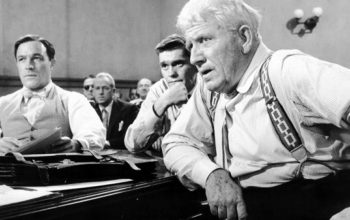I Made a TARDIS
I’m new to modelling and there are a few areas for improvement – mostly in lettering obviously, but also the parts could be a little better aligned. I’m not posting about it to humblebrag (well, mostly not). I’m writing about it because it illustrates something I’ve been thinking about in writing. So here’s a view not from straight on.

And here’s the view from the side.

The trickiest parts were the paneled doors. Luckily, I didn’t have to make paneled doors all the way around. Reasoning that when it’s on a shelf, people will be looking at it front on or at an angle. Painting the panels on doesn’t look quite as good as cutting and assembling the pieces, but since they’re only intended to work at an angle they work. Unless you’re looking at the side directly, the painted panels seem a continuation of the pattern on the front. You don’t quite get the effect in the photo, but it works pretty well in the flesh, as it were.
Now here’s the back. Why bother? Again, it’s on a shelf. No one needs to see this part. Honestly, I probably didn’t need that whole wood panel there, I could have just left it open.

Why do I bring this up on a writing blog? Because pretty clearly this is what writers do all the time. Lots of detail in the bits they want you to look at, a little hazier at the edges, nothing out back.
But here’s the weird thing – many people are unnecessarily critical of that. Many of people seem to think that every story has to be fully detailed all around, so that it can hold up being viewed at any angle.

It can go even further than that, so that even if the work is internally consistent, if you spend too long thinking about the universe in which this story is hypothetically embedded, something might not make sense.
The problem here, basically, is not that this sort of criticism is uniformly bad or wrong. It’s simply that it’s not always appropriate. If an author is attempting detailed, Tolkienesque worldbuilding, then it’s perfectly reasonable to complain if this is done badly. The problem comes with the assumption that this is, that this ought to be, what every writer is doing.
It’s also a form of media criticism that’s easy. It doesn’t involve looking deeply into a work and discovering theme, examining symbol or wondering about meaning. It’s a very mechanical sort of process, and consequently frequently boring.
And it’s unnecessary. Stan Lee, of Marvel Comics fame, found himself on the receiving end of many letters complaining about the rough edges around his work. Unable to do the obvious and simply reply, ‘so don’t look at the rough edges, look at the other parts,’ he invented the ‘No Prize.’ Basically, if someone noticed a continuity issue, they won a ‘No Prize,’ which was exactly what it sounded like – no prize (later, No Prize certificates were printed and mailed out, which is a lot less funny). This turned the constant nerdish griping into a fun game.
Later, Lee added the stipulation that to get a ‘No Prize,’ you had to not only notice an inconsistency, you had to come up with an explanation for why it wasn’t really an inconsistency at all.
And honestly, this is the solution to the ‘problem.’ If a story doesn’t make sense, make it make sense. Fill in the pieces. Hell, keeping to comics history, this was the claim to fame of Stan’s protege, Roy Thomas, whose career at both Marvel and DC was largely about just filling in details that other authors had decided weren’t all that important.
“I wouldn’t complain if it just had a sentence, explaining that…”
You know what? Pretend it did have that sentence. Write it in with a pen, if you have to. It’s all made up, you know. There’s nothing stopping you.
(Just to be clear, So far as I know, I haven’t been receiving complaints of this type about my own books. I’m just talking about criticism in general.)



